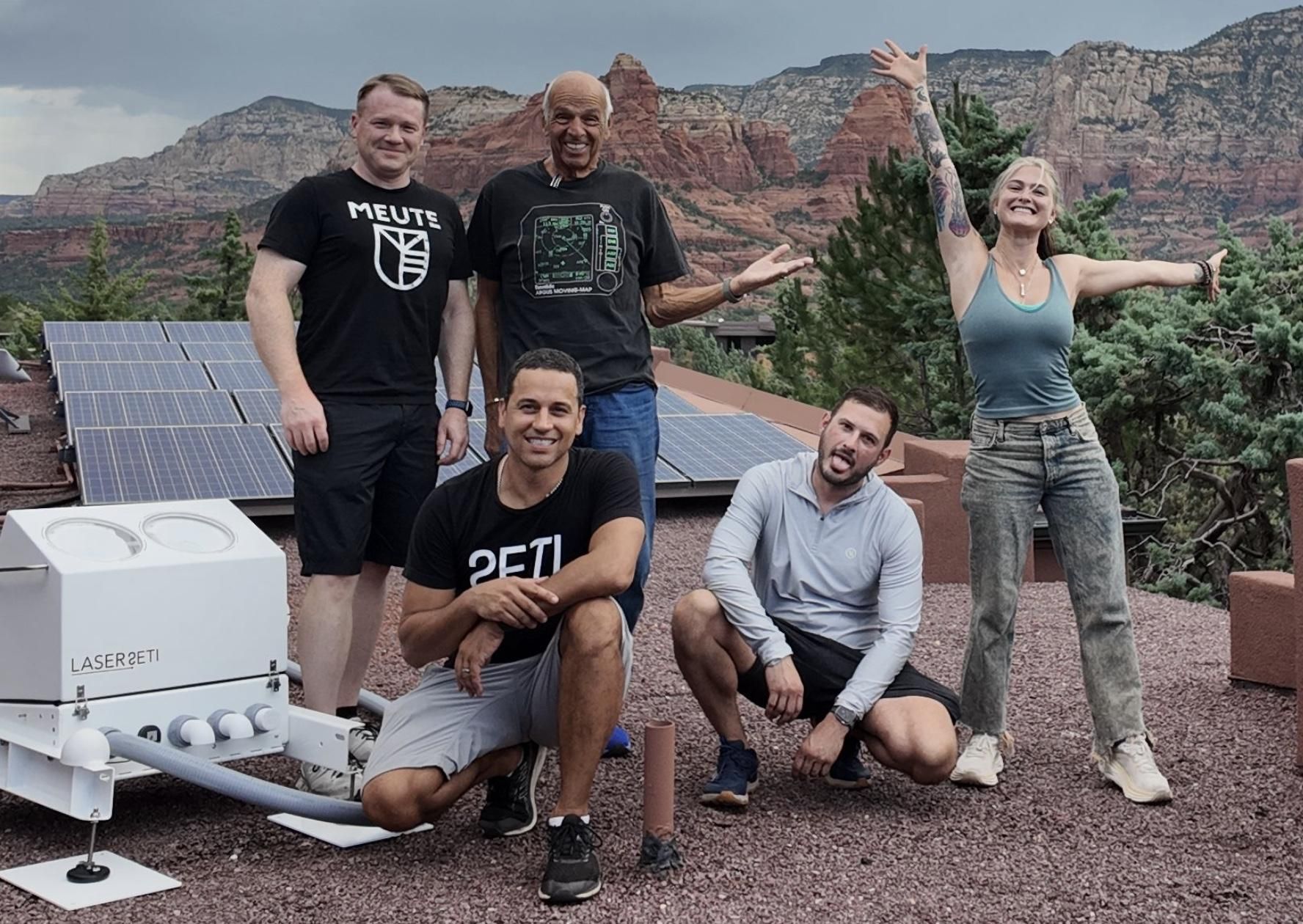
A silly moment with the LaserSETI team and Richard Factor on his roof after the Sedona installation was complete. From left to right: Eliot Gillum, Franck Marchis, Richard Factor, Daniel Kuljis, Lauren Sgro.
July 2024 brought a heat wave to Arizona as well as an unprecedented software outage across the nation. But for Richard Factor, it also brought excitement and the glimmer of hope that accompanies the forefront of science. Factor, a Grammy winner and ham radio expert, was offering his rooftop as the location for the next LaserSETI observatory.
The LaserSETI project is an instrument and set of observatories that aim to scan all the sky all the time for laser pulses originating outside our Solar System. By separating the light from cosmic bodies into its constituent parts, LaserSETI instruments can distinguish between optical light from natural sources and those from lasers. The catch is that lasers cannot be produced by any currently known natural processes; therefore, a detected laser signal would indicate either a new astrophysical discovery or something extraterrestrial in nature. To capture a potential pulse, LaserSETI must maintain constant coverage of the sky, which requires placing instruments at sites around the world. With observatories already in place in Hawai’i and California, Factor’s rooftop in Arizona would become the next addition—a valuable third pair of eyes, and an important step forward in a much larger global effort.
Factor had been in contact with LaserSETI Director Eliot Gillum since 2021, but his interest in searching for life elsewhere started long before that. “I can’t remember ever not thinking there was life out there and wondering when we’d discover it. I fortuitously got a copy of the Project Cyclops report sometime in the ‘80s and got interested in doing something about it in 1993,” said Factor. That led him to co-found the SETI League, a nonprofit organization of amateur and professional astronomers dedicated to the search for E.T. through small-scale, privately operated projects. Although the SETI League ended last year, it united thousands of people over its 30-year run. It contributed to the field through projects like Moonbounce experiments, where Factor ran a “beacon” off the Moon for members to receive the signal and test their astronomical hardware. Factor also contributed to SETI outreach in other ways through his audio equipment company, Eventide. The 1997 movie Contact featured an Eventide Harmonizer® as the receiver of the alien signal.
Factor’s lifelong interest in all things extraterrestrial brought him to eventually recommend his rooftop as the site of a SETI observatory. After finalizing the plans, the LaserSETI team braved travel mishaps and installed the third set of LaserSETI instruments with Factor. After two days of running cables and cutting wires in the July sun, Factor joined the SETI mission in a new way. He says he’s excited to be “part of the Search—even passively—instead of just talking about it.”
A timelapse of the LaserSETI instruments being installed on Richard’s roof.
Due to cloudy skies during the installation, the team couldn’t focus the instruments before leaving Sedona last summer. But a visit last month by Gillum, in which he focused the cameras and adjusted some minor issues, got this observatory up and running. Anyone can see what all three observatories are doing at any time. Before this latest addition, the LaserSETI network could only observe 19% of the sky with its two initial stations. With the inclusion of the Sedona location, it now monitors nearly a third of the night sky and coverage will grow as the LaserSETI network expands.
Nine more LaserSETI observatories are currently under construction, with one slated for installation in Puerto Rico during the coming months. This fourth observatory will be situated on the Island of Magueyes and monitored by the University of Puerto Rico. But even as the LaserSETI network expands to its full potential, Factor will continue to be involved and monitor the Sedona observatory for functionality. The ham radio tower behind his house gives him “easy” access to the rooftop via a short but steep climb, although Factor says his wife encourages him “to stay on the ground and not die climbing the tower!”
Completing the Sedona observatory installation may be one small step for SETI, but is a giant leap for LaserSETI and Richard Factor. Perhaps the instruments on that rooftop in Arizona will be the first to catch a laser pulse, which would need to be verified by the other instruments with overlapping sky coverage. “I imagine there will be plenty of pulses,” says Factor. “I’d contain my excitement until there was a verified signal or other proof of space aliens, at which point there would be that excitement, relief, and quite a bit of, “I told you so.”
News
Related News
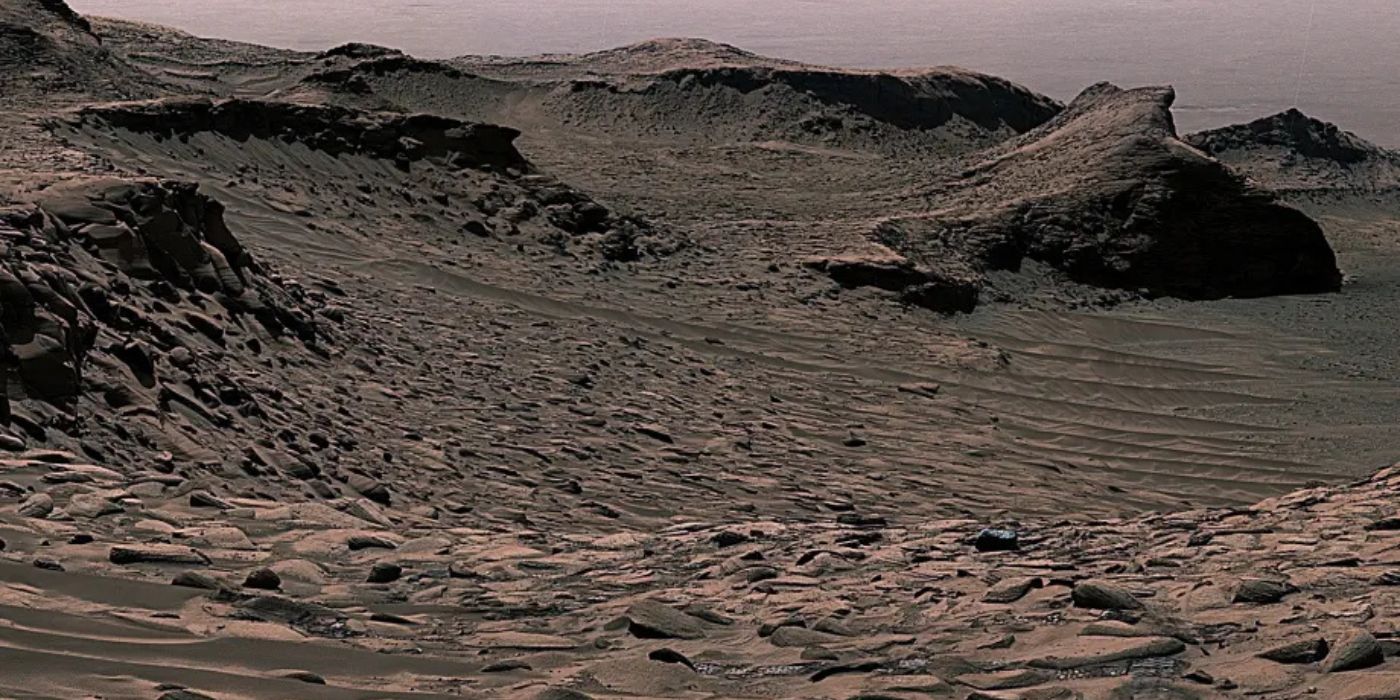
Mars’s Ancient Carbon Cycle: How Rocks on Mars Tell the Story of a Vanishing Climate
#SETI Live Blog #Mars #Astrobiology #SETI #Solar System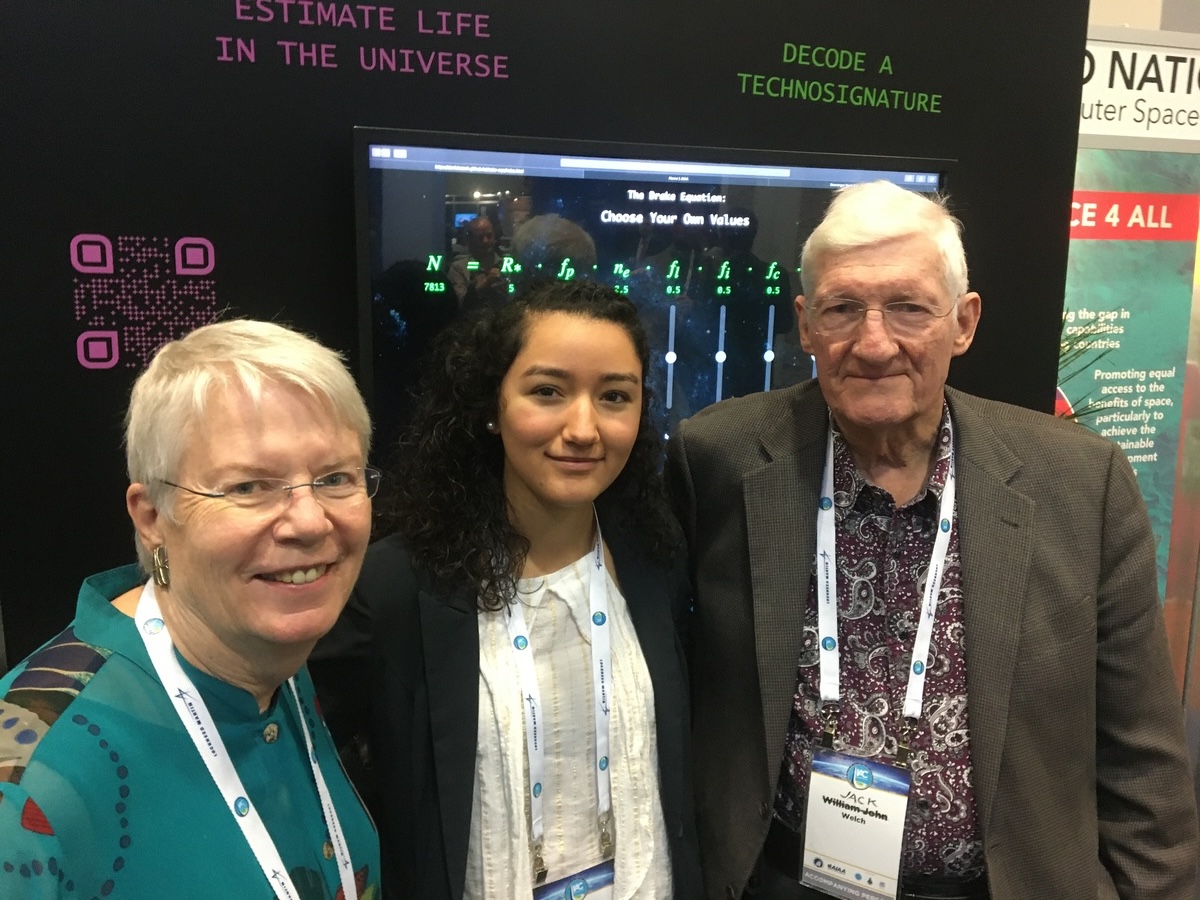
SETI Institute Names First William J. Welch Postdoctoral Fellow
#Press Releases #ATA #Fellowships #SETI #Hat Creek Radio Observatory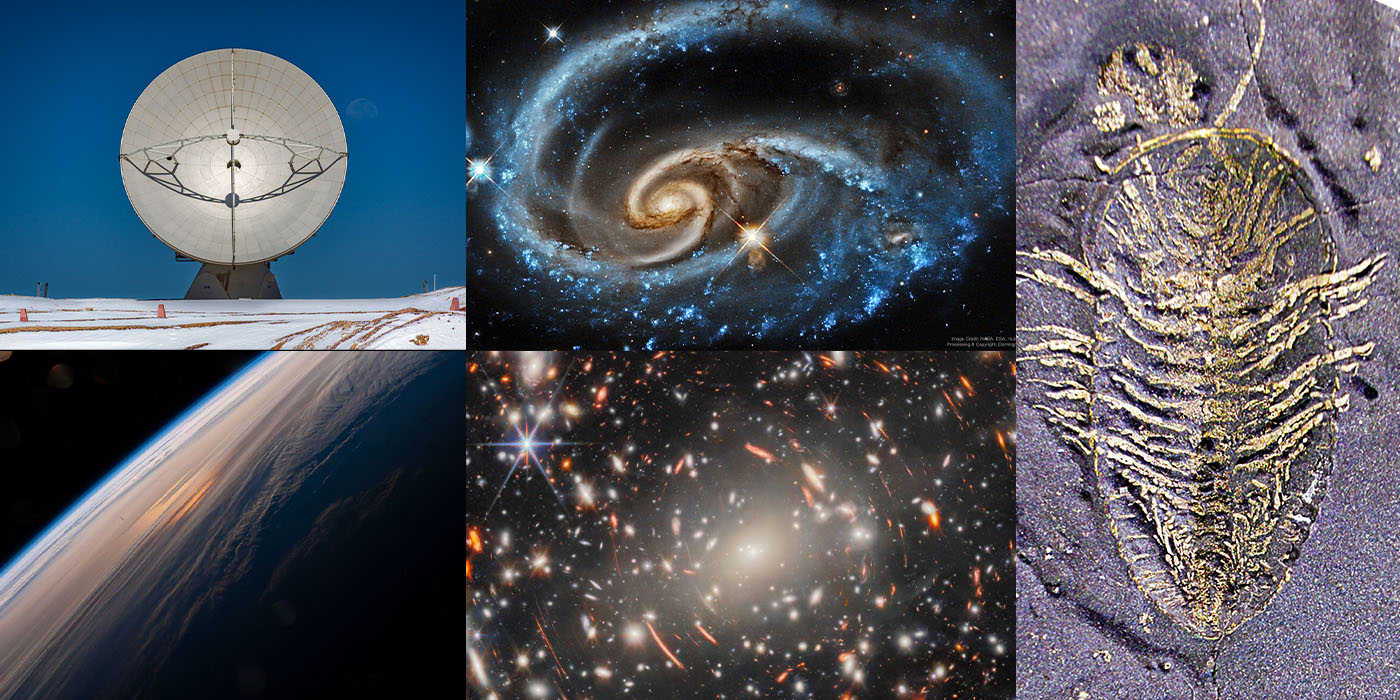
Planetary Picture of the Day - Week of June 02, 2025
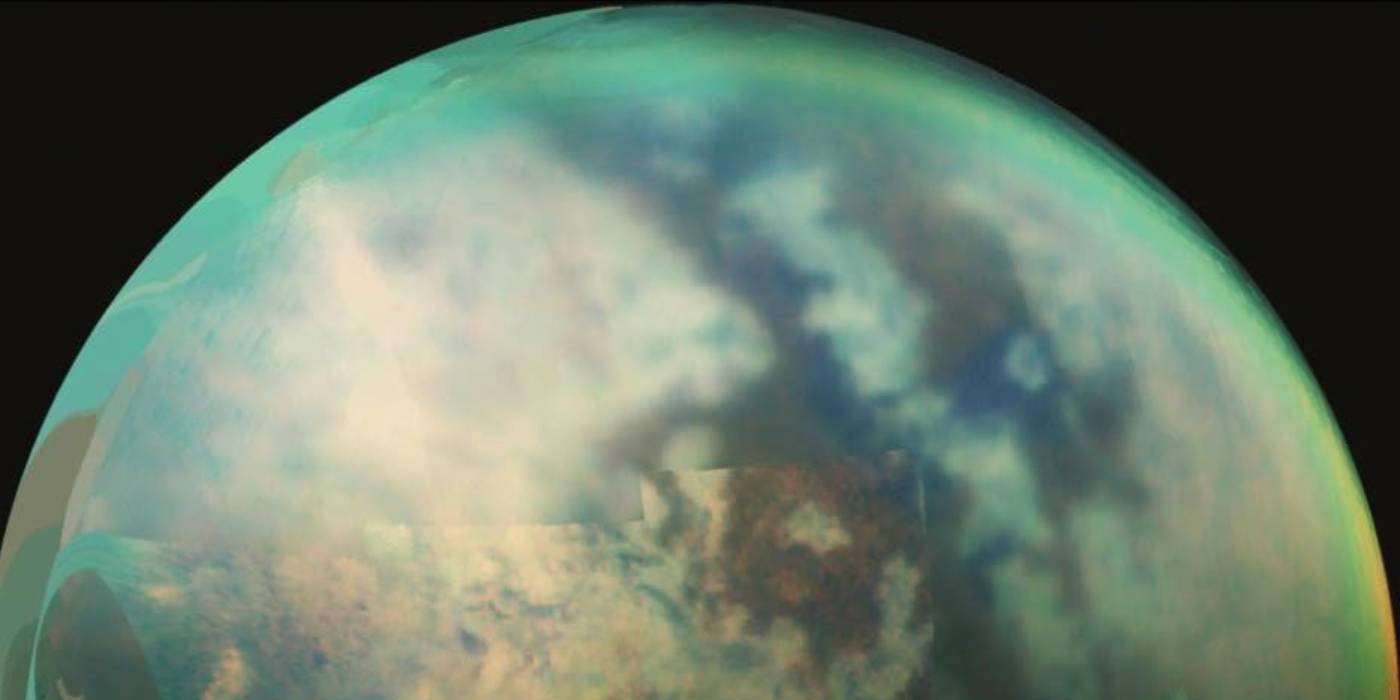
Titan’s Missing Deltas? What Cassini Saw — and What It Didn’t
#SETI Live Blog #Solar System #Astrophysics #Astrobiology #NASA Missions and Observatories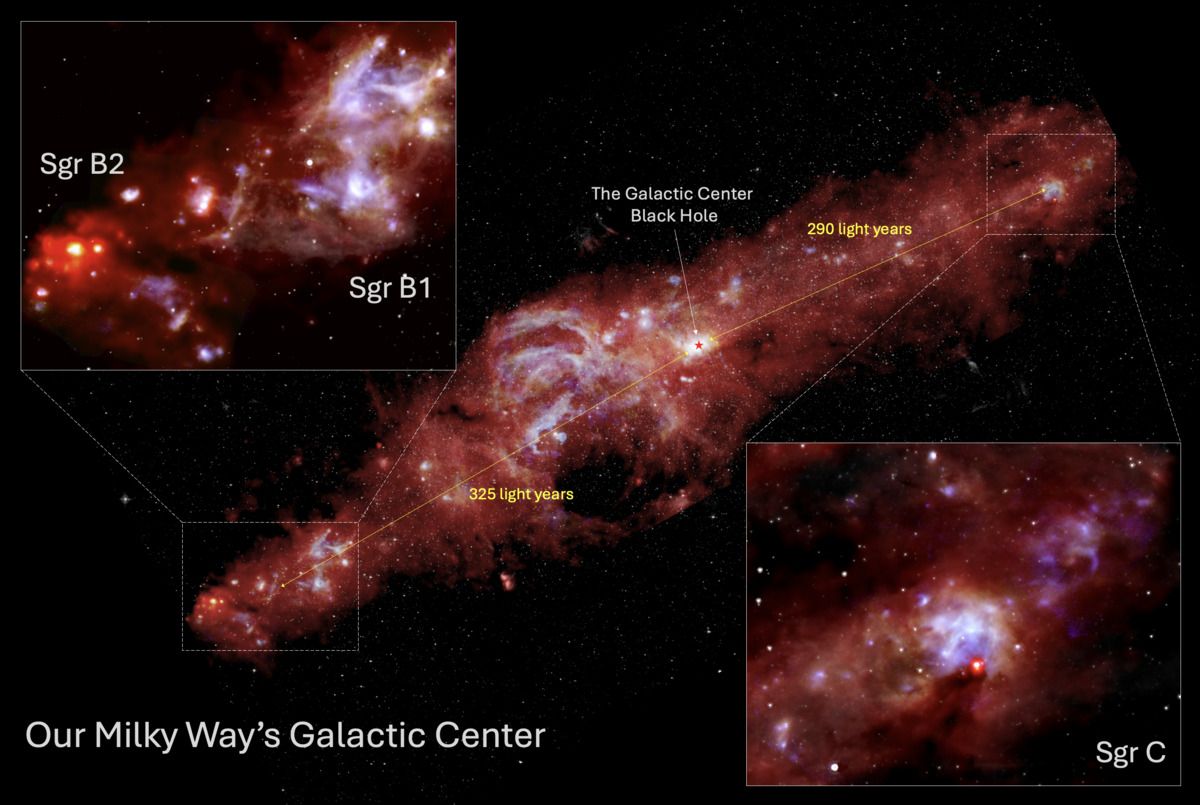
Unusual Stellar Nurseries Near Our Galaxy’s Center Puzzle Scientists
#Press Releases #SOFIA #NASA Missions and Observatories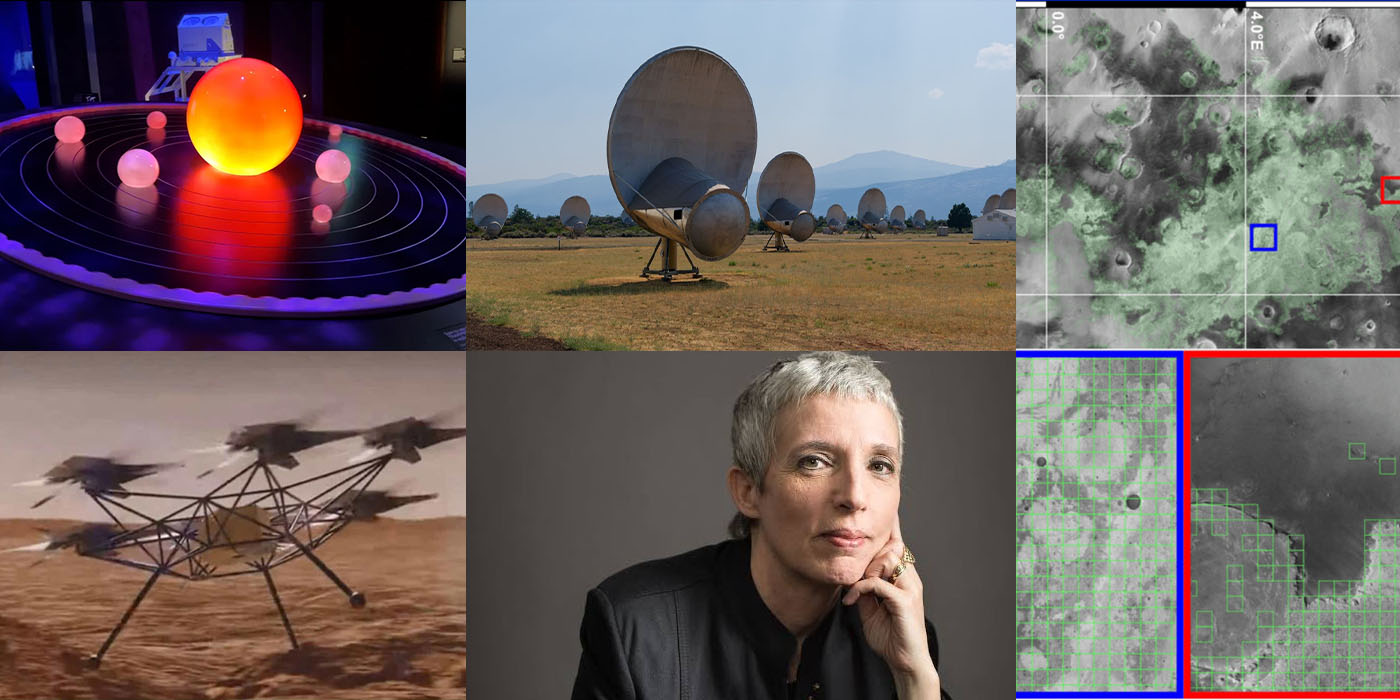
SETI Institute in the News: May Roundup
Research
Related Projects
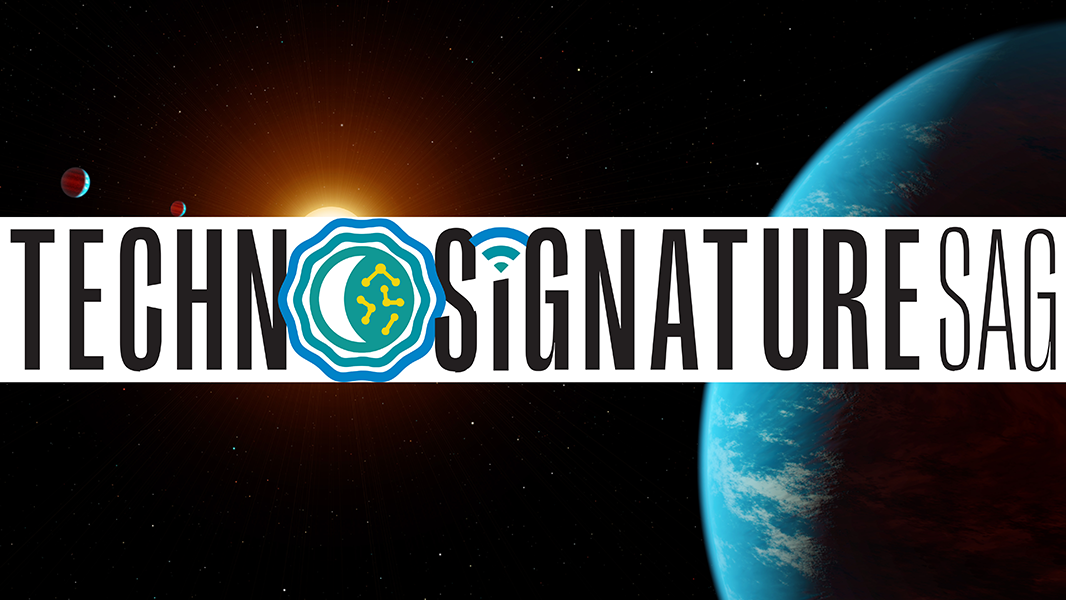
Technosignatures SAG
Technosignatures SAG is a group of volunteer experts who have been chartered by NASA to produce a report to NASA’s Exoplanet Exploration Program, containing the results of its analysis on how NASA can better integrate technosignature search into its portfolio. #Technosignatures SAG #Technosignatures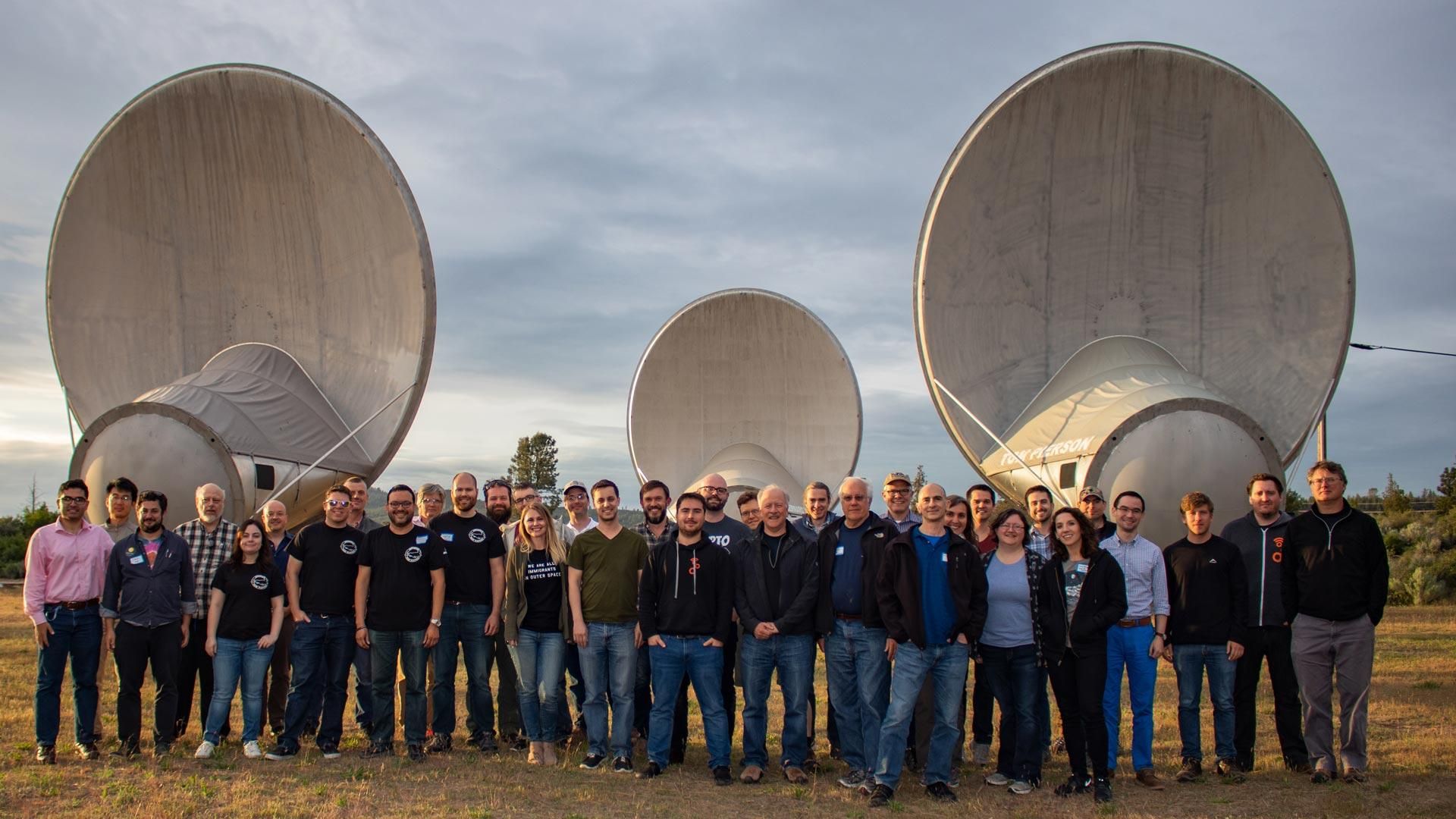
GNU Radio and SETI
GNU technology could revolutionize the development of receiving equipment for SETI (and for radio astronomy in general.) It promises to speed the design of new receivers, and to allow scientists to quickly change how data are analyzed and displayed. #GNU Radio #Radio Astronomy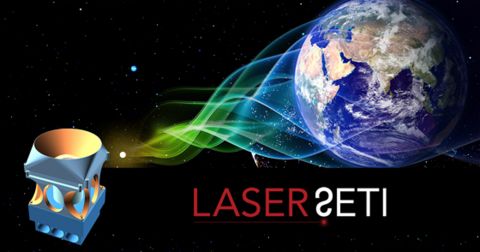
LaserSETI
SETI Institute’s LaserSETI program is building a network of instruments to monitor the entire night sky. This network represents an unprecedented growth in the continuing search for manifestations of sophisticated intelligence beyond Earth. #LaserSETI #Optical SETISupport the
SETI Institute
Scientists are getting closer in their search for life beyond earth. But with limited federal funding for the search for extraterrestrial intelligence, supporters are the reason cutting-edge scientists can keep their eyes on the sky.
)

